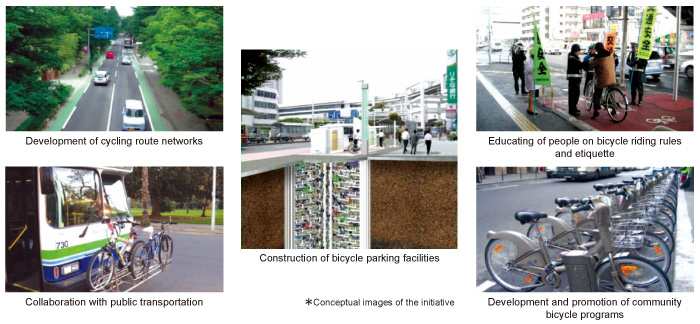
History of Traffic Safety Measures: Relevant Legislation, Organization and Policy (PDF)

New Approaches to Reduce Road Traffic Accidents in Japan (PDF)
Traffic Safety(1-5)
1. Reducing traffic accidents
Since the 1990s, the number of road fatalities has steadily declined, falling below 4,500 in 2012. However, the annual number of road fatalities and injuries remains over 800,000. Pedestrians, particularly the elderly, account for a larger proportion of fatalities in Japan. Therefore, authorities have been implementing various safety actions on both arterial and local roads.
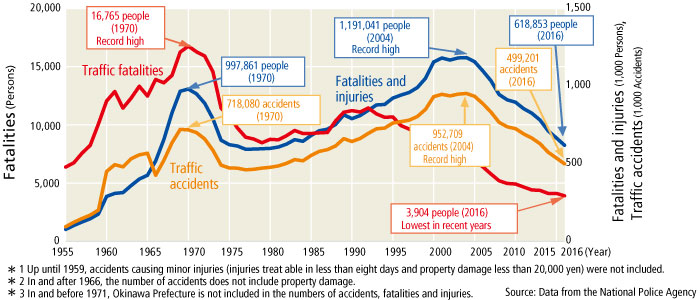
Traffic accident measures on arterial roads
The government identified 3,396 arterial road sections across the country where fatal or injury accident rates (accidents per VKT) were particularly high. Prefectural public safety commissions and road administrators gave higher priority for actions to be taken on these segments.
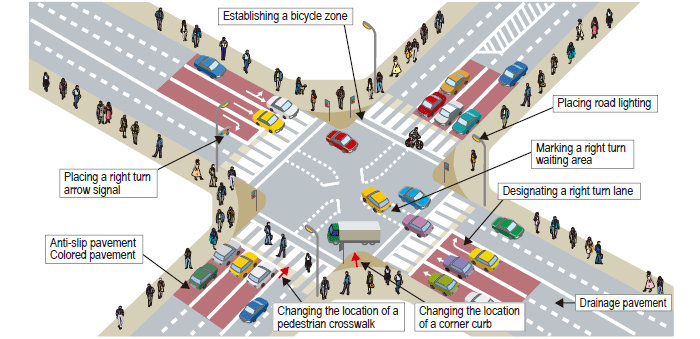
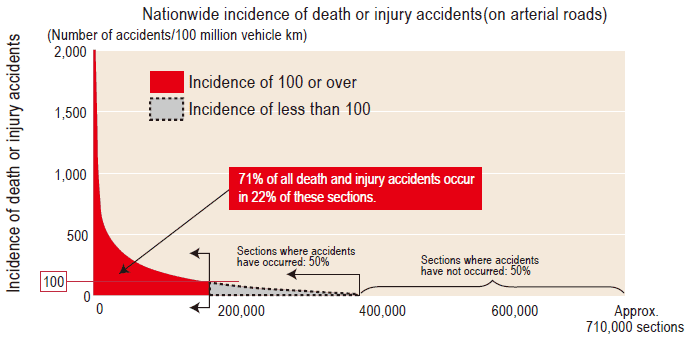
* Created from data on averages of accidents that occurred during four years (2003-2006) on approximately 180,000 km of national and prefectural roads throughout Japan.
After sorting the sections in descending order according to the incidence of death or injury accidents, those which require priority implementation of measures are selected and specified as priority action sections.
Traffic accident measures for community roads
Meticulous traffic accident measures are being conducted for community roads by establishing a problem solving cycle from problem identification and sorting to confirmation of project implementation benefits through collaboration with regional residents and related organizations.
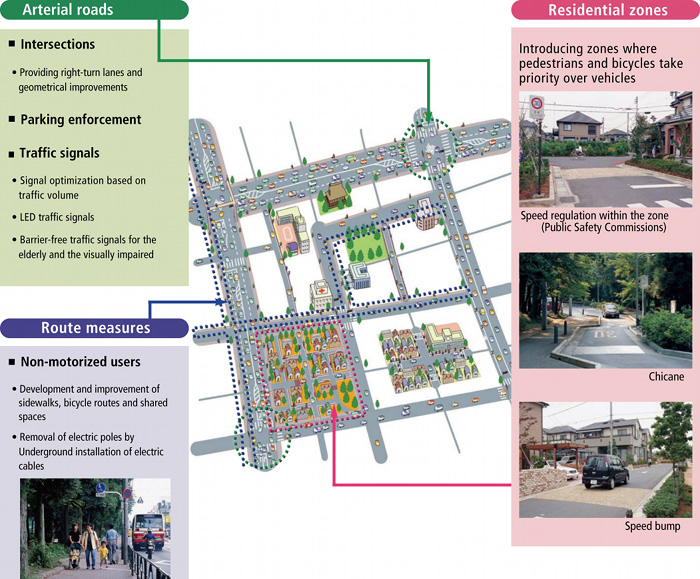
2. Easing traffic at railroad crossings
A survey on the road traffic situation at roughly 36,000 railroad crossings all over Japan was conducted in 2006 and revealed that about 1,800 crossings urgently need measures for easing traffic congestion. Comprehensive and focused measures are being carried out on the crossings by combining immediate measures, such as widening pedestrian paths, and drastic measures, such as the implementation of grade separation.

The continuous grade separation project promotes integration of divided cities and smoothes urban traffic flow by eliminating many crossings through the use of elevated or underground railways at road-rail intersections.
3. Promoting universal design in pedestrian spaces
By 2020, all designated roads will have barrier-free sidewalks.
The Minister of Land, Infrastructure, Transport and Tourism has identified roads with a high volume of pedestrian traffic, especially areas where many elderly and disabled people travel along the roads that connect railway stations, government facilities, hospitals and other important public facilities, and has designated them as in need of upgrades.

4. Eliminating utility poles
Utility poles are often considered unsightly and obstructive, so MLIT promotes the removal of them in order to secure safe and comfortable pedestrian spaces, improve the landscape and living environment, enhance the reliability of telecommunication networks and preserve historical townscapes. This visual preservation of historical sites and towns promotes tourism, restores local culture and revitalizes local communities.
MLIT will continue promoting the removal of utility poles using methods that accommodate local situations, such as widening roads in conjunction with burying utility cables underground and installing cables under or behind eaves. MLIT will also seek the most cost effective methods for pursuing these activities.
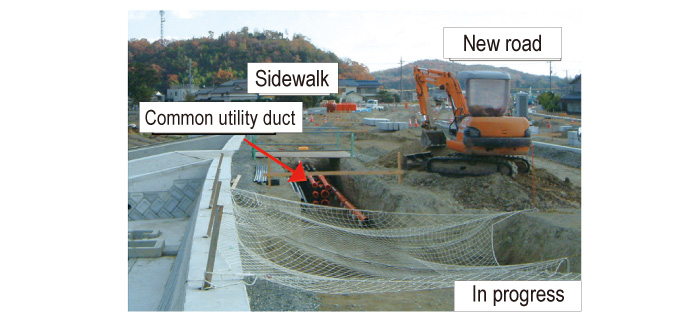
Identical installation of common utility duct simultaneous with road construction project
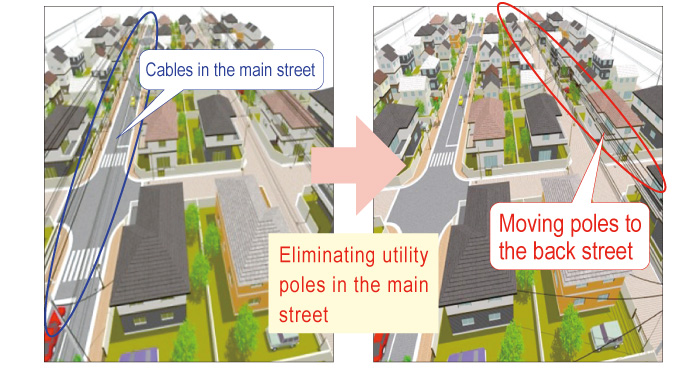
Moving cables to the side street behind the street where poles are to be eliminated
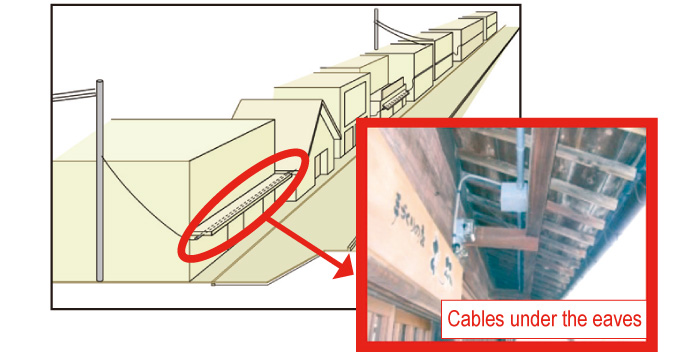
Running cables under/along the eaves of houses along the street
Promotion of Removal of Utility Poles
We will continually bury electric cables underground as a means of removing potential obstacles in the event of disasters, securing safe and comfortable traffic space, and creating an attractive landscape for tourists, based on the plan to remove utility poles.
-Japan is behind major cities in other countries in terms of ratio of buried power poles:
London, Paris, Hong Kong: 100% (2004), Taipei: 96% (2015), Tokyo's 23 wards: 8% (end of FY2017), Osaka city: 6% (end of FY2017)
-Based on the "Act on Promotion of Utility Pole Removal", the MLIT has launched a project to assist with removal of utility poles (FY2018 to2020) (Apr 6, 2018) (refer to P73)
-Typhoon Jebi (locally called "No.21") hit Osaka, leaving 1,700 utility poles damaged or fallen.
○To achieve the target of removal of utility poles on roads with a total length of 1,400 km, the MLIT is working on the promotion of low-cost construction techniques, reduction of construction period, and expansion of property tax privileges. We are creating a project, "Assistance to Removal of Utility Poles“, to help municipal governments remove utility poles.
○Based on the results of the inspection for strategic infrastructure, our Three-year Urgent Project has started removing poles on 1000 km of access roads, with attention to damaged areas among emergency transport routes in urban areas with risk of fallen poles.
○Targeting substantially narrow sidewalks in addition to the emergency transport routes *22, we are banning exclusive use of a road for a new utility pole, removing existing poles*23, restricting/removing installation of poles on road development projects.
○With due consideration to other elements that occupy a road, we are reviewing a charge for occupation to reflect external economic impacts.
Note *22: National Highways on emergency transportation routes (a total length of 20,000 km) have been subject to the restriction based on Article 37 of Road Act since Apr 2016. (Other routes in 42 municipalities, 25 prefectures (30,000 km) have also been subject to the restriction as of Sept. 2018)
*23: Circular notice and guidelines are to be published for operation.
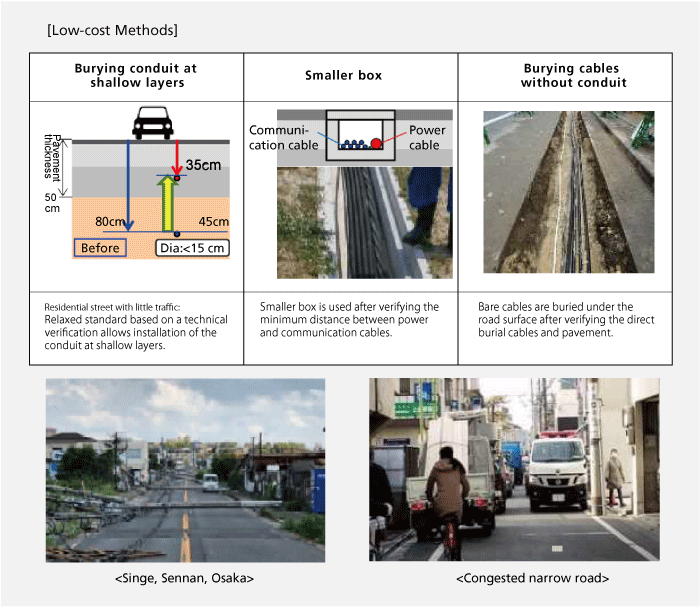
5. Creating a safe and pleasant environment for bicycle riding
While bicycles play an important role in urban transportation as a convenient transportation mode, infrastructure for cyclists is still insufficient and has resulted in slower reduction rate of bicycle accidents compared to that of all accidents.
To lower the accident rate, MLIT and the National Police Agency (NPA) have launched the “Committee for Creating a Safe & Comfortable Environment for Bicycles” in 2011. The Committee submitted the following recommendation to MLIT and the NPA: “A Bicycle Environment that is Fri endly for Everybody: Proposal for a Safe & Comfortable Environment for Bicyclists.”
In response to the recommendation, in November 2012, MLIT and the NPA jointly created “Guidelines on Creating a Safe and Comfortable Environment for Bicyclists.”
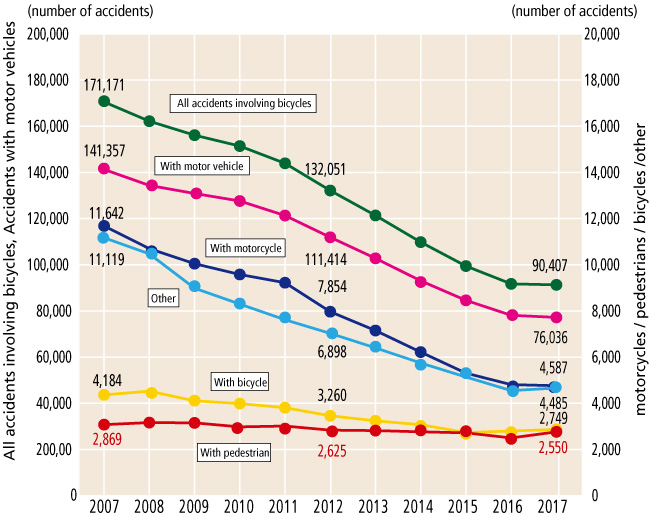
Note: "Accidents involving bicycles" means the first party or the second party is a bicyclist and
accidents between two or more bicyclists are calculated as one instance.
Source: Information from National Police Agency
